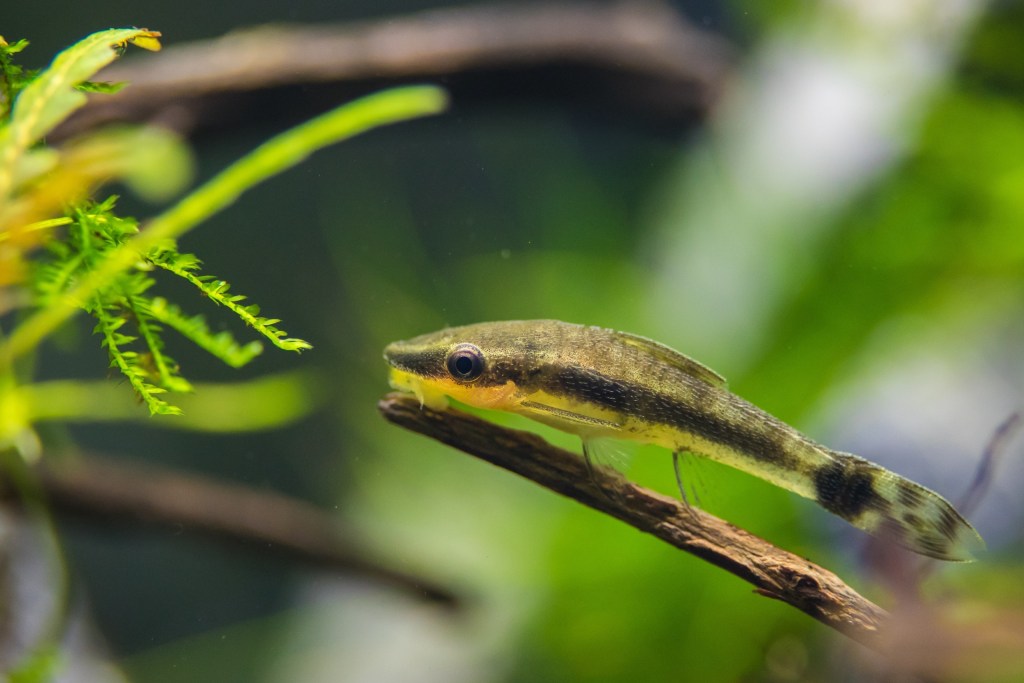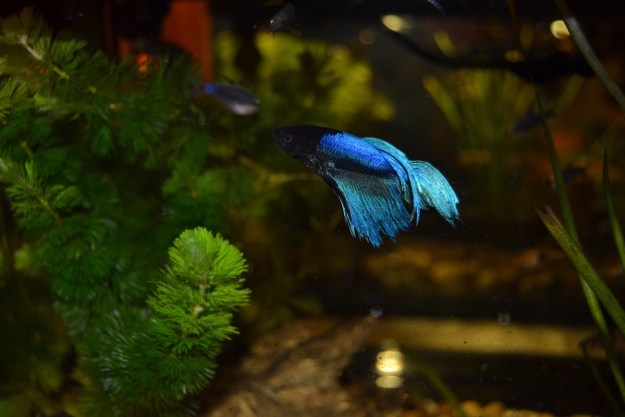Catfish are special — they’re not just a fun and interesting pet but also a cleaner! Adding a freshwater catfish to your tank can help keep your little ecosystem in balance. Unlike most of the fish in your aquarium, catfish are bottom-feeders, which means they eat what falls to the tank floor. This can help remove excess food and algae from your fish home, which will keep your tank cleaner. It’s a no-brainer to bring one into your tank. Here are the best types of aquarium catfish to buy.

Cory catfish
A school of corydoras will surely liven up your tank. With over 160 species in this group, there’s a lot to choose from when you’re getting ready to select a type. While size, diet, and temperament vary a bit in this crew, cory catfish are nearly always placid and easygoing creatures. One key aspect of the cory: They need friends. No corydora will be happy alone in your tank, and for that reason, we don’t recommend these for a tank under 20 gallons. Depending on your existing environment, check out the pygmy, the peppered, or the elusive orange laser. Stock up on worms and, of course, catfish food before bringing your group home.
Synodontis catfish
This African fish will need a larger tank than your average cory. These guys are known for two unique characteristics: swimming upside down and “squeaking.” If you add a synodontis to your tank, you might hear the strange noise they make that actually comes from their bones. Also unlike the cory cat, many synodontises prefer the quiet life and will do just fine on their own. Be careful when selecting his tank mates, though, as smaller fish may look like a meal to a big, hungry catfish. You’ll have a number of species to choose from here, too, so look thoroughly at different kinds before making your final selection.

Otocinclus catfish
Running out of space? These catfish make a great addition to a slightly smaller aquarium and can live happily in 10 gallons, provided it’s not overcrowded with other schools. You’ll love putting these little ones in your tank because they’re voracious algae eaters who will gladly help with the tidying up. In fact, they eat so much, you’ll probably need to prepare extra algae for them if it gets low. Oddly enough considering their big stomachs, this is one of the smallest types of catfish that we keep as pets, reaching only about 2 inches as adults. A bit shy by nature, otos may hide in a plant or ornament, so fill your aquarium with places for them to retreat to.
Plecostomus catfish
Before you pick up a common pleco, don’t forget: These guys get big. You’ll need a 200-gallon tank or more to fit this fish, which can reach 24 inches in the wild (and about 16 inches in your home). Putting together a larger tank can present a fun project since it opens the door to new decoration ideas. This bottom sucker likes rocks and driftwood, so you’ll have to design your tank layout to incorporate both. Plecos also eat some algae with other plants and even veggies like cucumbers mixed in. If a pleco sounds like a good choice but you don’t have enough room, check out the golden-nugget or bristlenose varieties, which are a bit smaller. Depending on the kind you select, you may also need to provide meat like worms or substitute with catfish food from the pet store.
While these cool creatures do help maintain a fresh environment, they don’t eliminate the need for a filter. In fact, many catfish require moving water to replicate the currents they often live in. Watch carefully, too, for other fish gobbling up all the food before it gets to the bottom — some of the more timid kinds can go hungry when their tank mates decide to take their meal. As with any fish colony, not all types get along, so check with your vet or pet shop owner before mixing and matching. Once your freshwater catfish has settled in, he’ll add a unique look and diet to your aquarium and do his part to keep your tank squeaky clean.
Editors' Recommendations
- What causes high pH in an aquarium? We’ll walk you through getting your tank levels in check
- A simple guide to what to feed tadpoles in your aquarium
- What fish can live with bettas? These are your best bets for fish buddies
- Can you make a profit breeding your bearded dragon?
- Add rainbowfish to your tank – these beauties will brighten up any aquarium




